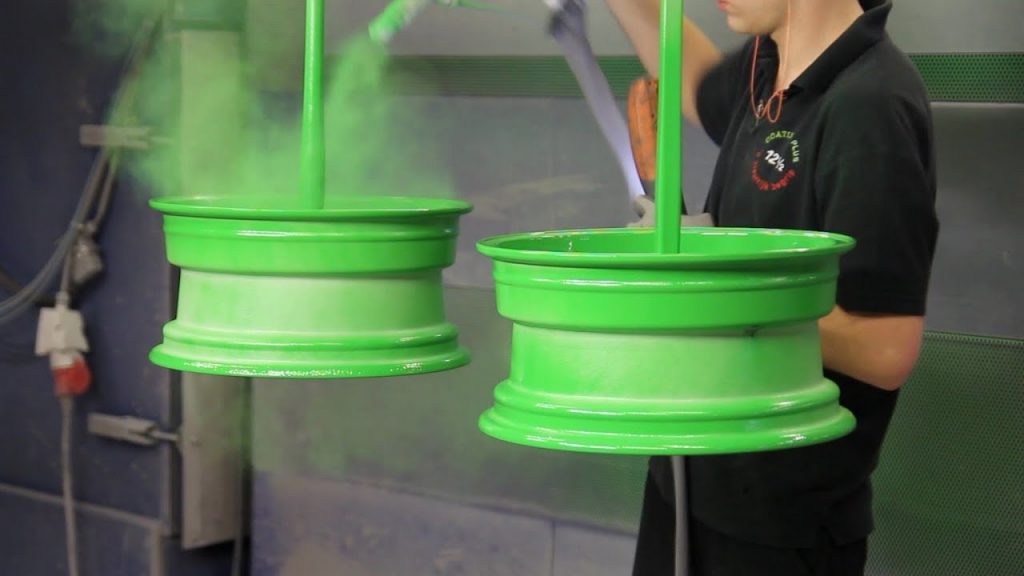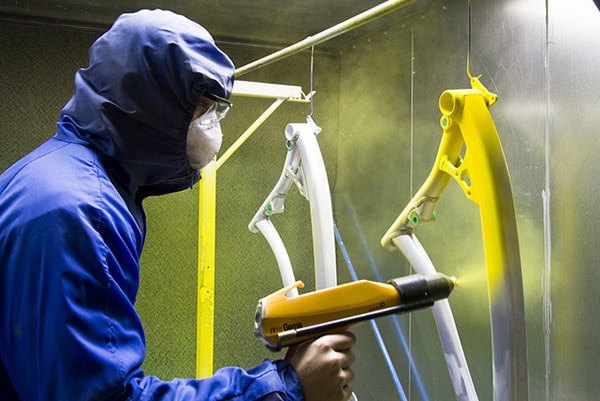Overview of Powder Coating
The powder coating process is very similar to a painting process except that the “paint” is a dry powder rather than a liquid. The powder sticks to
the parts due to electrostatic charging of the powder and grounding of the parts. Any substrate can be used that can tolerate the heat of curing
the powder and that can be electrically grounded to enhance charged particle attachment. The powder flows and cures during the application of
heat.
Several advantages of powder coating over paints are:
• Powder recovery for reuse
• No VOC generation therefore no VOC destruction required
• Can be more durable than paints (powder chemistry dependent)
Several disadvantages of powder coating over paints are:
• Can have less leveling than paint (more orange peel)
• Curing is typically more energy intensive than paint drying due to higher
temperature requirements
Surface preparation before powder coat application is still critical for adhesion and defect avoidance.
Typical steps in a powder coating process for metal parts:




